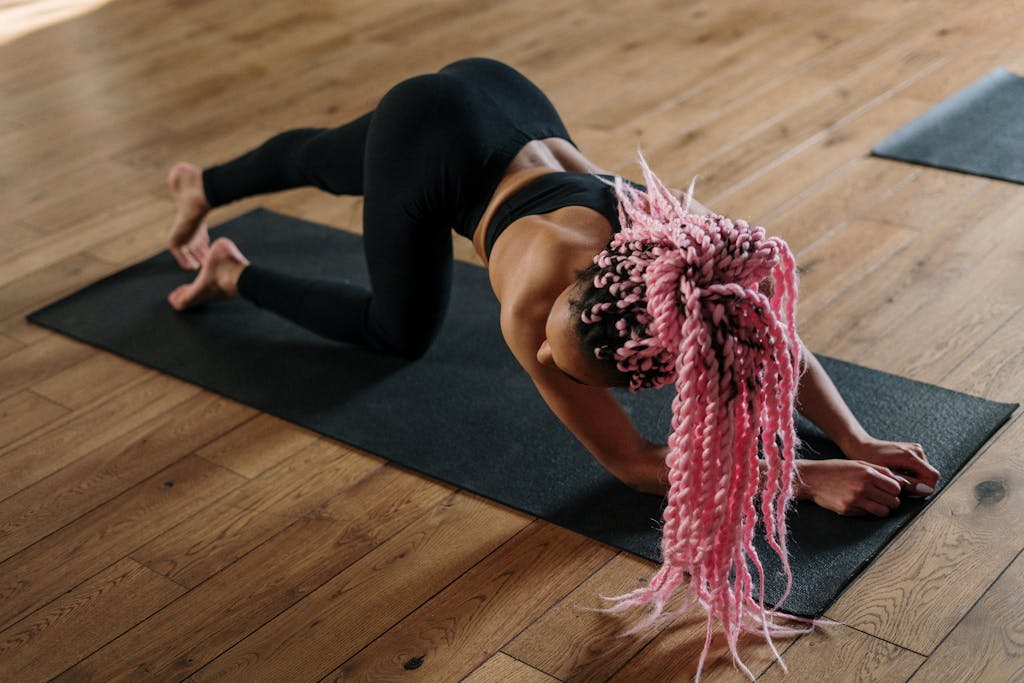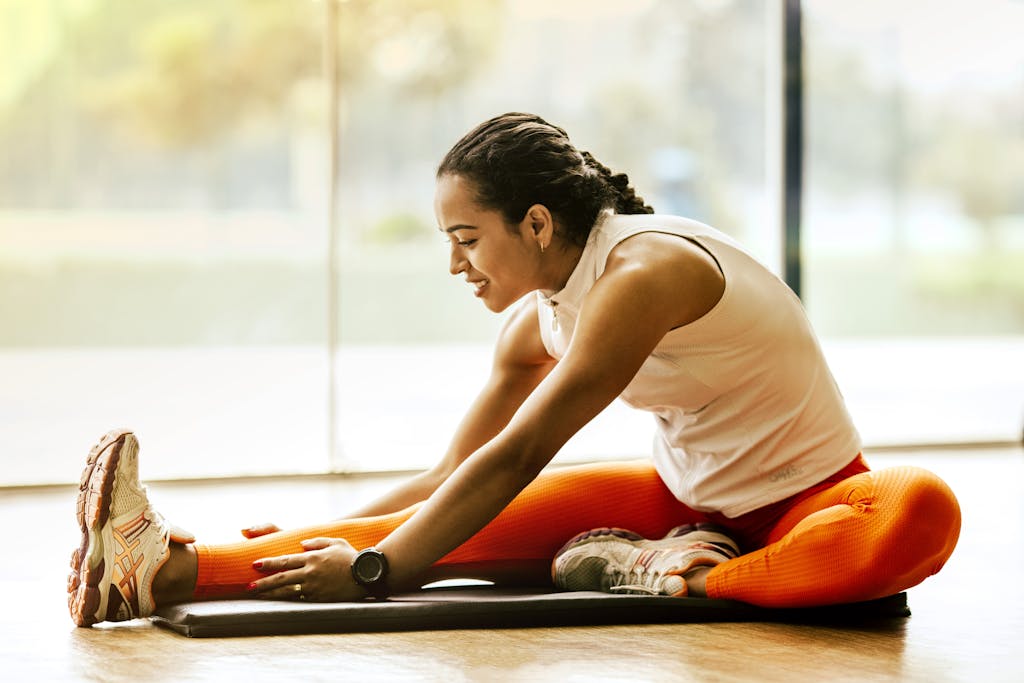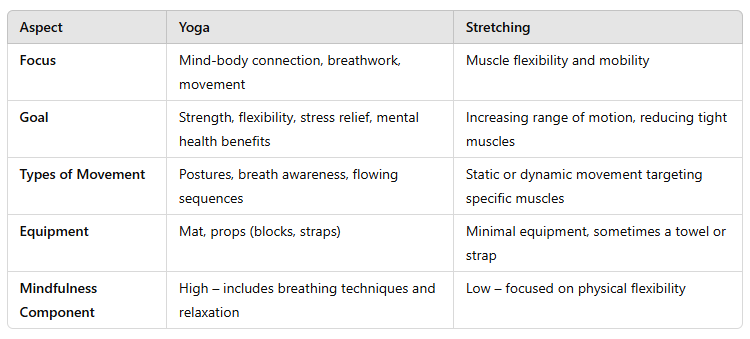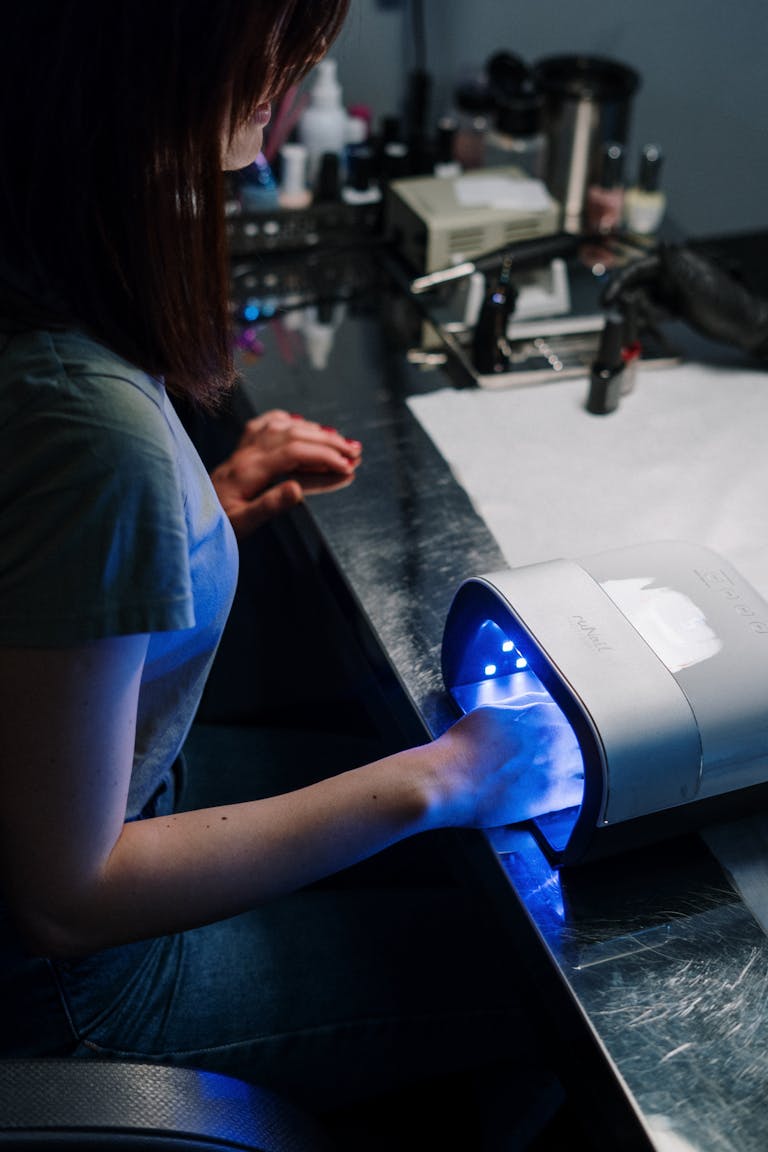Yoga vs Stretching: Understanding the Difference
Joy in Wellness and Movement
At the beginning of 2025, I let myself off the hook of forcing hard exercise and determined that this year’s wellness would not be about rigid routines or checking boxes, but would instead be about finding what feels good to me, restores my energy, and brings me joy. Lately, I’ve been wanting to explore yoga vs stretching because I keep hearing how gentle they are—exactly the kind of movement my midlife body will appreciate and benefit from.
Yoga and stretching are two simple yet powerful ways to bring more ease, flexibility, and mindfulness into your daily routine. Both help release muscle tension, improve range of motion and support overall well-being, but they serve different purposes. Understanding the difference can help you choose the right practice for your needs—whether that’s rolling out your yoga mat for a full-body reset or taking a few minutes to ease tight muscles with static stretches.
Let’s explore how each practice can help you move through life with more comfort, ease, and, most importantly, joy.

Understanding Yoga
Yoga is a mind-body practice that originated in ancient India. The practice combines movement, breathwork, and mindfulness. Yoga is more than just physical body postures (asanas); it’s a holistic practice that can improve flexibility, strength, balance, and mental well-being. There are many types of yoga, ranging from gentle and meditative (like Yin or Hatha yoga) to intense and physically demanding (like Vinyasa or Power yoga). Regardless of the style, yoga exercises incorporate controlled breathing and mental focus, making it a full-body and mind experience.
Benefits of Yoga
- Improves flexibility, balance, and coordination.
- Enhances mental clarity by reducing stress and anxiety.
- Strengthens muscles while increasing range of motion.
- Promotes relaxation and better sleep.
- Supports a healthy spine and posture.
- Provides a whole body workout that integrates mindfulness.
Essential Tips for Yoga
- Find the right style – If you’re new to yoga, start with beginner-friendly yoga classes or a gentle Hatha session.
- Use a yoga mat – A good mat provides grip and comfort during poses.
- Focus on breath – Controlled breathing helps deepen poses and improve relaxation.
- Don’t force flexibility – Yoga is a journey, and flexibility will come with time.
- Stay consistent – A regular yoga practice will yield the best results.
Understanding Stretching
Stretching, on the other hand, is a straightforward physical activity designed to improve flexibility and muscle function. It involves lengthening muscles to increase the range of motion and reduce stiffness.
There are 2 types of stretches: static stretching (holding a stretch for some time) or dynamic stretching (moving through a stretch to warm up the muscles). While stretching can be done on its own, it’s often used as a warm-up or cool-down before and after exercise.
Benefits of Stretching
- Reduces tight muscles and improves mobility.
- Prevents injuries by keeping muscles flexible.
- Enhances recovery after a physical activity or workout.
- Increases blood flow and reduces muscle tension.
- Improves athletic performance and overall movement.
Essential Tips for Stretching
- Warm up first – Stretching cold muscles can lead to injury; try light movement beforehand.
- Hold static stretches – Aim for 15-30 seconds per stretch to maximize benefits.
- Don’t bounce – Jerky movements can strain muscles; stretch smoothly and gradually.
- Listen to your body – Stretching should feel good, not painful.
- Be consistent – Stretch daily to maintain flexibility and prevent muscle tension.

Yoga vs Stretching: The Difference
At first glance, yoga and stretching might seem similar, but the key differences come down to intention, movement, and the mind-body connection.

Yoga vs Stretching: Which One to Do and When?
Choose Yoga If:
- You want a full yoga routine that strengthens and stretches your entire body.
- You’re looking to reduce stress and improve mental health.
- You enjoy a structured practice guided by yoga instructors in a yoga studio or at home.
- You want to practice breathing techniques and meditation.
- You want to develop greater strength, balance, and a more flexible body over time.
- You’re looking for a great way to improve physical health while reducing stress and promoting inner peace.
Choose Stretching If:
- You need a quick way to relieve tight muscles, and joint pain and improve your range of motion.
- You’re warming up or cooling down before/after another physical activity.
- You’re recovering from exercise and want to prevent stiffness.
- You want a simple, targeted approach to improve flexibility without special equipment
- You want to enhance your fitness routine without spending much time on it.
If you have time, combining both practices can be incredibly beneficial! You can stretch before and after workouts while incorporating yoga poses into your daily routine for long-term flexibility and strength.
Building a Routine That Sticks
One of the keys to maintaining a joyful and healthy lifestyle is consistency. Whether you choose to practice yoga, incorporate regular stretching, or do both, finding a routine that works for your body and daily schedule is essential. The beauty of both yoga and stretching is that they don’t require a lot of extra time or special equipment—just a willingness to move and listen to your body.
If you’re new to yoga, consider joining a yoga program that introduces you to basic stretching, yoga stretches, and mindful movement. Many yoga instructors offer beginner-friendly sessions, either in-person at a yoga studio or online, that help you build confidence in yoga postures and breath control. Even a short yoga routine a few times a week can make a lot of difference in how your body feels.
For those focusing on stretching exercises, starting with basic stretches like the butterfly stretch or dynamic stretches before a strength training session (or sports activity) can help prevent injuries and improve performance. A stretch practitioner or physical therapist can also guide you in incorporating an assisted stretch routine that targets specific major muscle groups to support physical fitness.
If you’re looking for an easy way to incorporate both yoga and stretching into your fitness routine, the Peloton app offers a variety of guided classes to help you stay consistent. There are on-demand yoga classes ranging from gentle flows to power sessions, as well as targeted stretching exercises designed for recovery, it’s a great way to build a sustainable movement habit. Alternatively, YouTube is a great way to access high-quality instruction without spending a dime. Check out this10 minute Full Body Yoga Flow YouTube video here. It’s a great place to start.
The best time to stretch or practice yoga is whenever it fits into your lifestyle. Some people prefer a morning yoga workout to set a calm tone for the day, while others find that regular stretching before bed helps relieve muscle tension and improve sleep. The latter works better for me; I am not a morning person and will no longer force myself to be one. Experiment with different approaches to see what works best for you. At the end of the day, movement should feel like a gift, not a chore. Do what works for you!
Final Thoughts: Choosing Joy in Movement
Wellness isn’t just about routines or habits—it’s about creating a life that feels good, inside and out. Moving your body with intention—whether through a yoga workout, static stretching, or a simple deep breath—can be an act of self-care that adds joy to your everyday life.
If you’re craving a mindful, strengthening practice that nourishes both body and mind, roll out your yoga mat today and flow through some yoga postures. If you need a quick way to relieve tight muscles and improve your range of motion, take a few moments for static stretching. Nothing feels better! Either way, the goal isn’t perfection—it’s feeling good in your body, honoring where you are, and embracing movement as a source of joy.
Because at the end of the day, joy isn’t just something we find—it’s something we create, one intentional choice at a time.

